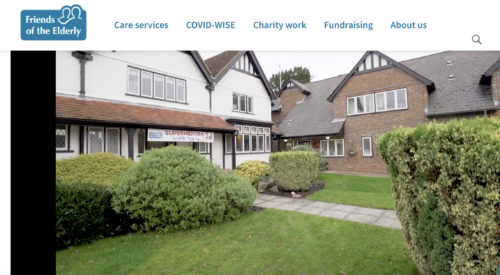
latest
Haptic vests could help tackle loneliness in care homes
Haptic vests project planned for care homes to help keep residents connected

“I’m incredibly excited about this haptics project. The feedback we’ve received so far has been very positive…. I can really imagine how this could provide a connection between people who can’t be together.” Peter Bloomfield, Head of Policy and Research

Future Care Capital (FCC) is launching the latest phase of a project to explore haptic garments among residents of care homes.
The pilots will seek user feedback to inform plans for a larger project related to isolation and wellbeing.
FCC is working with a number of care homes to try out haptic vests that are worn by residents and enable their relatives and friends outside to connect with them and send them a hug.
The technology has been developed by the wearable technology company CuteCircuit and was featured in our Spotlight on Innovation series in February.

Now Little Bramingham Farm residential care home in Luton, part of the Friends of the Elderly group, has signed up to take part in the project and will be receiving their haptic vests shortly.
Care home manager Emma Lawrence says: “We’re really looking forward to trying this out as we believe it could have real benefits for the people we care for.
“We plan to start off by using the vests with a couple of our residents and then we’ll starting giving feedback and see how we go.”
Little Bramlingham Farm care home has 26 residents and plans to try the haptics vests out on two people at first

Future Care Capital announced it was launching this pilot scheme in November, but as a result of external events the initiative has been delayed.
Peter Bloomfield, FCC Head of Policy and Research, explains: “Because of factors beyond our control, including the pandemic and subsequent new regulations, we have had to think on our feet.
“For example, to be COVID compliant the vests now have to be wipe-down and easy to clean rather than the original fabric. So that involved a redesign.
“And then because of supply chain issues, several of the electrical components will now not be available until 2022. So that meant another reconfiguration so the vests could be made using the technology that was available.”
Some of the components also got stuck in customs and needed to be collected in person.
As a result of the vests changing so radically, they need to be certified again by the CE testing laboratory to demonstrate they meet EU safety requirements.
However, even if the vests had been ready as planned the project could not have gone ahead before now as there has been restricted access to care homes.
Dr Bloomfield says the process has been “instructive to say the least.”
“It’s been hectic but it also demonstrates the risks and barriers that exist when it comes to developing very new technology and products for pilots.
“But now we’re at the stage where people are about to try it I’m really looking forward to hearing what they think.
“It’s early days but the hope is that this technology will provide a shared experience and a real connection between people who are separated, and that could be a very powerful thing now and after the pandemic.”
The technology can be used in a number of ways, for example someone can play music to their loved one so the wearer experiences the sound as vibrations through the vest.
FCC is in talks to bring other care homes into the pilot scheme. For more information please contact research@futurecarecapital.org.uk
The haptic garments – developed by the wearable technology company CuteCircuit – were featured in our Spotlight on Innovation series in February